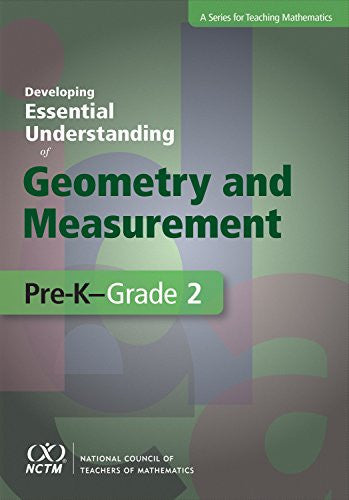
Developing Essential Understanding of Geometry and Measurement for Teaching Mathematics in Pre-K-Grade 2 (The Essential Understanding Series)
Author: E.Paul Goldenberg
ISBN: 0873536657
Number Of Pages: 90
Publisher: National Council of Teachers of Mathematics
Details: How can you build on young children's interactions with the world to develop their geometric thinking? What can you say to a student who claims that a diamond isn't a square because it "stands on a point"? How can knowing what does not change when shapes are transformed help you extend your students' thinking about the area of geometric figures? How much do you know ...and how much do you need to know? Helping your students develop a robust understanding of geometry and measurement requires that you understand this mathematics deeply. But what does that mean? This book focuses on essential knowledge for teachers about geometry and measurement. It is organized around four big ideas, supported by multiple smaller, interconnected ideas-- essential understandings . Taking you beyond a simple introduction to geometry and measurement, the book will broaden and deepen your mathematical understanding of one of the most challenging topics for students--and teachers. It will help you engage your students, anticipate their perplexities, avoid pitfalls, and dispel misconceptions. You will also learn to develop appropriate tasks, techniques, and tools for assessing students' understanding of the topic. About the Series: Focus on the ideas that you need to understand thoroughly to teach confidently. Move beyond the mathematics you expect your students to learn. Students who fail to get a solid grounding in pivotal concepts struggle in subsequent work in mathematics and related disciplines. By bringing a deeper understanding to your teaching, you can help students who don't get it the first time by presenting the mathematics in multiple ways. The Essential Understanding Series addresses topics in school mathematics that are critical to the mathematical development of students but are often difficult to teach. Each book in the series gives an overview of the topic, highlights the differences between what teachers and students need to know, examines the big ideas and related essential understandings, reconsiders the ideas presented in light of connections with other mathematical ideas, and includes questions for readers' reflection.






